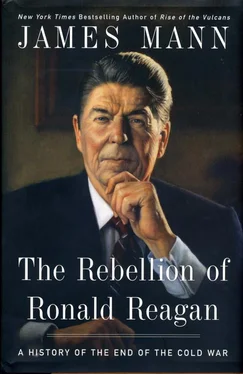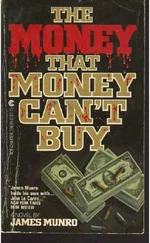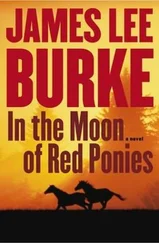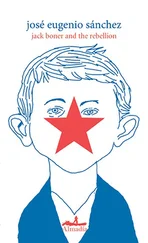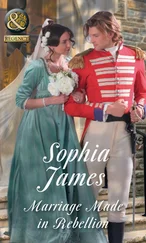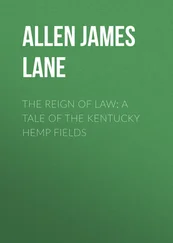In January 1987, Clayton Lonetree, a former marine security guard at the U.S. embassy in Moscow, had been charged with espionage after he confessed to passing classified information to the Soviet Union. The marine had started to have an affair with a woman who was a Russian interpreter at the embassy, and she in turn then introduced Lonetree to her “Uncle Sasha.” He turned out to be a KGB officer, who began obtaining classified documents from Lonetree. When the case became public in the early weeks of 1987, newspapers carried front-page stories claiming that Lonetree had allowed KGB agents to wander through the American embassy at night. 9
None of this had anything to do with Massie. But the secret Washington campaign against Massie alleged that “Uncle Sasha,” the KGB agent running the Lonetree case, was the very same KGB official who was, separately, talking to Massie. “ ‘Uncle Sasha’ was also Suzanne Massie’s handler,” one official who worked on Reagan’s National Security Council asserted in an interview for this book. 10The allegation was not that Massie was knowingly working for the KGB, but that she was a dupe, unwittingly being used by the KGB as what U.S. intelligence officials in that Cold War era usually called an “agent of influence.”
It seems extremely likely that even this flimsy allegation was false. Massie’s contact in the KGB was Bogdanov—a fact that she had made known at the Reagan White House from the very start of her 1983 conversations with McFarlane at the National Security Council. During the prosecution and trial of Clayton Lonetree, “Uncle Sasha” was subsequently identified as a KGB official named Alexei Yefimov, not Bogdanov. 11It made sense that they would have been different people. Would the KGB really have assigned the covert work of entrapping lowly marine security guards to the very same person who spent his days disseminating the Soviet point of view about arms control and world affairs to prominent American scholars, journalists, and diplomats? If so, the supposed “Uncle Sasha” must have been both the KGB’s busiest and its most versatile agent.
As it turned out, the allegations against Lonetree turned out to be considerably less damaging than originally reported. A detailed review later concluded that Lonetree had never allowed KGB agents into the embassy. Nonetheless, in the early months of 1987, after the Lonetree story broke, the Moscow embassy affair was used in Washington to discourage Shultz from trying to do business in Moscow. 12And at the same time, the allegation linking Massie to “Uncle Sasha” was employed in an attempt to discourage Reagan from talking to Massie.
Officials on the National Security Council resorted to other gambits as well to seek to curtail Massie. When she returned from another trip to the Soviet Union in April 1987 and asked, as usual, to meet with Reagan, Fritz Ermarth, the leading Soviet specialist at the NSC, drafted a note to Massie for the president to sign. Ermarth sent the proposed letter to Carlucci on April 23, 1987, with an accompanying memo that said that what he had written was “designed to discourage future visits.” It said:
Dear Suzanne:
Thank you very much for your letter of April 13.
I am delighted that your trip to the Soviet Union went well. As you can imagine, the pace around here has become pretty tempestuous. It is for that reason that I was unable to take your call, and won’t be able to visit with you around May 1. I would very much appreciate it, however, if you would brief Frank Carlucci or key members of his staff on your impressions of the current Soviet scene or, perhaps, send him a more detailed report of your impressions.
Nancy and I send our best regards.
Sincerely, [Ronald Reagan]
Ermarth explained the letter to Carlucci in a cover memo: “The President may find it too unfriendly. But, if he responds with his natural style, he will certainly encourage future requests for access. This is getting to be a case where we need his advice.” 13
As Ermarth surmised, Reagan did indeed apparently find the letter too unfriendly. It was never sent. Instead, Massie was granted the meeting she had requested with Reagan. Yet the effort to separate Reagan from Massie continued. On April 30, Carlucci sent Reagan a memo, with copies to Vice President George Bush and White House chief of staff Howard Baker, which called into question Massie’s views about the Soviet Union, and particularly her positive embrace of Russian nationalism. Carlucci wrote:
Apart from her artistic projects, Ms. Massie is an enthusiastic student of what she calls the “revival of the Russian spirit,” a rebirth of interest among Russians in their history, culture, folk-ways, and religion. This revival has, from our point of view, many positive aspects, e.g., the search for a moral compass that Communist ideology has failed to provide. It also displays negative features, however, such as extreme chauvinism towards non-Russians (nearly 50% of the Soviet population), anti-Semitism, and hostility to all Western influences, including democracy and freedom of thought. 14
The mystery remains: What sort of business was being transacted in Massie’s shuttling back and forth between Moscow and the Oval Office? Any evaluation of Massie’s role as a message carrier depends upon the nature of the messages. What were Reagan and Gorbachev (or Bogdanov, purporting to represent him) trying to tell one another?
The answer can be found in the handwritten notes taken during Massie’s meeting with Reagan on February 25, 1987—the meeting that Carlucci had insisted on attending. These notes are in Carlucci’s handwriting, as he verified in an interview for this book. They demonstrate that the discussions being conducted indirectly, through Massie, went directly to the heart of Reagan’s summit diplomacy with Gorbachev.
The tumultuous meeting at Reykjavik had ended without resolving the question of when or even whether the two leaders would see each other again. In theory, Gorbachev was supposed to go to Washington for the next summit and then Reagan to Moscow. But no dates had been set—and in fact, Gorbachev was making clear that he did not want to proceed to another meeting with the president unless he could be sure there would be tangible results.
At the beginning of the February 25 meeting, Carlucci’s notes show, Massie offered an overview of the situation inside the Soviet Union and of Gorbachev’s role as Soviet leader. He was “lurching forward,” she said. He and his team were working toward decentralization and greater cultural openness. She spoke of an effort to revive life in the villages, and a “modest attempt towards pluralism.”
Next, the notes show, Massie couldn’t resist a belittling reference to Matlock, the new U.S. ambassador to Moscow. “Jack bureaucrat, Wrong message,” Carlucci wrote to summarize what Massie was telling the president. Matlock was a bureaucrat, and his appointment sent the wrong message to the Soviets.
Soon the discussion turned to Soviet-American diplomacy. Massie argued that the president should make a crucial concession to Gorbachev: Reagan should go to Moscow first, some time in 1987, before any summit in Washington. She contended that switching the order of the summits would appease Soviet pride. She also said she had been told by a Soviet official (that is, Bogdanov) that Gorbachev was worried about his personal safety; there was a threat that he might be assassinated if he came to the United States.
Reagan wasn’t buying any of these Soviet arguments, Carlucci’s notes show. He told Massie:
I waiting their reply. Want to be here. Then I go there. If they wait much longer, I won’t be able to go there. 1
Reagan was insisting on a Washington summit first. He was warning that if the Soviets didn’t accept the Washington invitation soon, there would be no time for him to visit Moscow for a second summit later on.
Читать дальше
